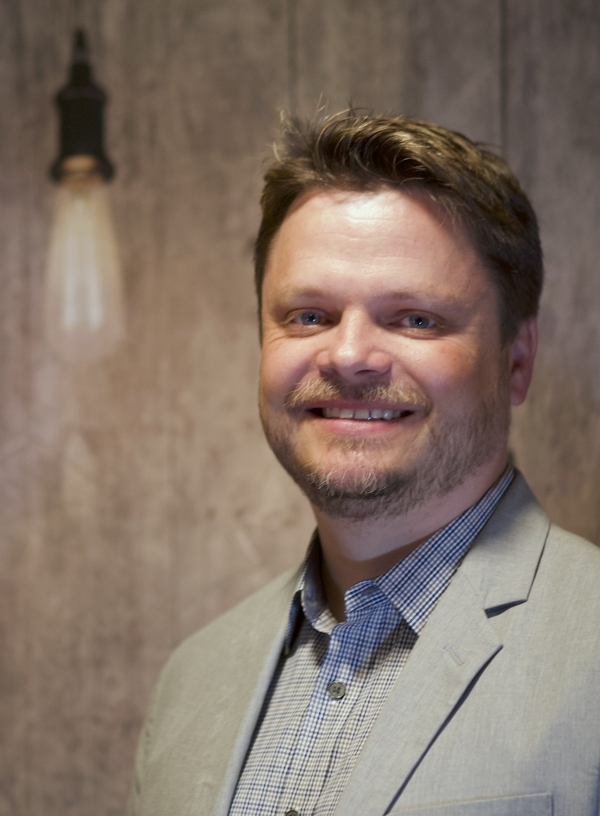You have /5 articles left.
Sign up for a free account or log in.
Rolin Moe is an old friend and collaborator. We’ve been in a dialogue with Rolin about the potential and pitfalls of evolving our shared academic/learning innovation work into a new scholarly discipline.
In 2023, Rolin moved to a new role as executive director, UC Online in the University of California Office of the President. As the last time we did a Q&A with Rolin was in 2019, we thought this was a good time to connect.

Q: What is UC Online? Tell us about your role.
A: UC Online is a mechanism at the University of California Office of the President dedicated to amplifying the system’s instructional expertise, technological infrastructure and systemwide resources in an effort to further our mission through online education. We created one of the nation’s first cross-campus enrollment systems, providing pathways for students to access courses across our nine undergraduate campuses to support time to degree and other educational endeavors. UC Online has provided significant funding to the campuses in the development of online courses and other ecosystem needs, and today nearly 40 percent of the academic year online courses throughout the system receive some level of support from UC Online. Most importantly, we are grounded in campus partnership, recognizing the importance of what we refer to as the “Power of 10” and identifying the areas where system support can accelerate innovation and growth.
As executive director, I organize and facilitate the initiatives and communities necessary to meet our goals of providing the highest quality education to our students. Whether through convening experts across the campuses to develop processes for initiatives, coordinating staffing for online learning innovations or fulfilling infrastructure needs to assist our system with communication that engages the affordances of scale, the work of UC Online is grounded in campus partnership and dedicated to fulfilling the mission of our system.
Q: Where does your work at UC Online fit into your scholarship on academic and learning innovation?
A: I’m an advocate for alternative forms of scholarship, as defined by Ernest Boyer. As an administrator, I’ve sought to identify opportunities to showcase how such scholastic vision can manifest in policy and process. In 2017, as an administrator, I led a yearlong professional development on emergent scholarship and its relationship to institutional structure. Both the scholarship of integration and the scholarship of application are areas with considerable alignment to how higher education institutions and systems conceptualize, develop, implement and assess their initiatives.
The ability to look at integration and application as an operational and a scholastic measure is what excites me the most about education right now. The development of innovations is important, but as Everett Rogers lays out in Diffusion of Innovations, it’s the implementation and organization of the work that determines success, no matter how impressive the elements of the project. Launching a new project or program comes with excitement and enthusiasm, but the most important work is two months before, when we recognize there is a key constituency not involved in the process whose participation will solve future obstacles when we go live, or two months down the road when the luster has worn off and it’s time to ensure that a working prototype can become part of the sustainable campus culture. The devil is in the details, and so are the greatest opportunities for meaningful and lasting impact.
I’m thinking about the role of creating new processes to solve existing problems; I believe the largest intersection of innovation and leadership is problem-solving. I’d label myself less an innovator and more a problem-solver fascinated by the concept of innovation and its deployment in our field. Currently, I’m focused on innovative approaches and practices to amplify the online component of the UC system towards a more integrated, equitable and accessible role in service to our campuses and students.
Q: What advice do you have for other alternative academics who would like to build a career that combines administrative leadership roles with research, writing and thought leadership?
A: The key obstacle for an alt academic is the need to translate all of the skills and aptitudes that come alongside forging a unique path in education into a format that can be related to the traditional structure. Meeting people where they are necessitates building connections and narratives for those populations so that the professionalism, rigor and value of your work can be recognized through historical means. It’s important to approach and execute your work in the manner you recognize will have the greatest impact. And it’s just as important to assist the broader education community in understanding how your approach fits into existing practices.
For me, I’ve been fortunate to find myself in areas where there was a leadership gap, and I’ve leaned in to the opportunity to be a voice in the sector. A few examples: As a researcher, my emergence in the world of higher education thought leadership started as a method to engage a very traditional work requirement. I needed to write a literature review for a dissertation about MOOCs in 2012; there was little writing at the time, and so I blogged the entries kind of like restaurant reviews. George Siemens retweeted it once, and suddenly, I was a go-to for newspaper interviews and blog roundtables. That writing led to invitations for more writing on further topics, and suddenly, I’m on French NPR talking about the problems of depending on information literacy. The blog wasn’t considered by many to be traditional scholarship, but the impact was so significant in the field that it provided a starting point to work with my institutions on its translation into artifacts for tenure, promotion and review. It also resulted in countless scholarship opportunities that are more traditional in scope.
The other aspect of the gap [in] perspective I find is in building coalitions to take leadership on areas where a topic isn’t outright owned or managed by an entity. This creates an opportunity to identify all the constituents involved in a process, bring them together to participate and manage the outcome in a way that can be perpetuated. This is often regulation or compliance work, but it both connects silos and builds trust. In general, no one wakes up excited to organize guiding principles for vendor expectations in the program management space, etc. But I do, and here’s why: If you can bring various groups together and use three email chains and a 90-minute Zoom to knock out the first iteration of any new work, you’ve created a repeatable procedure to be of assistance and make allies along the way, ensuring success for current and future projects.
In some ways, this is easier to accomplish in administration than it is in other areas of higher education. There absolutely is value in creation, in developing the new, in discovering something unique. But a great deal of administrative work is on the margins and in the spreadsheet cells. In those spaces, it’s about successful and sustainable operations. Build something new, and you have an artifact to celebrate in your CV. Sustain something important, and you have a connection to organizational culture and a unique perspective on how your work intersects with the present and the future.








